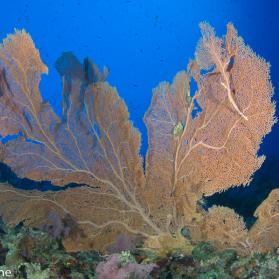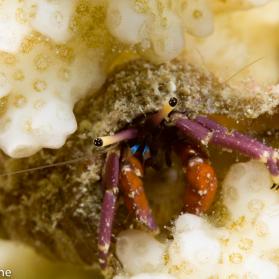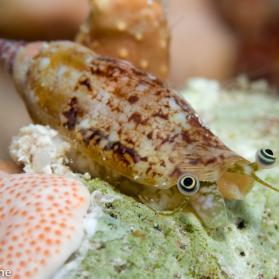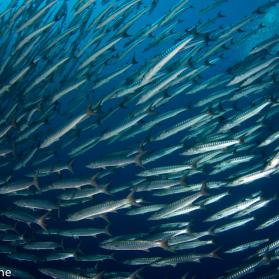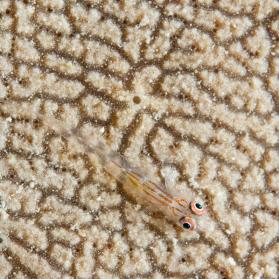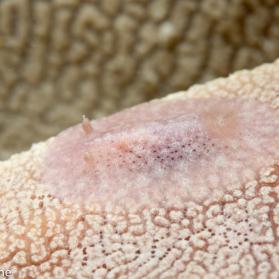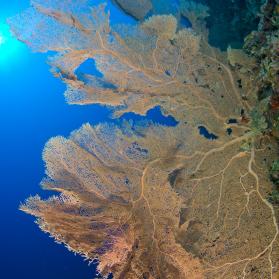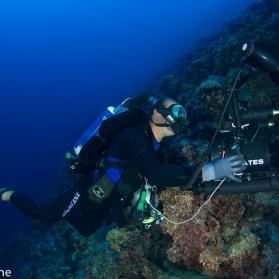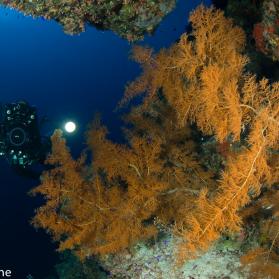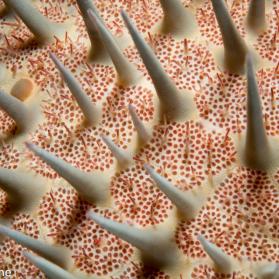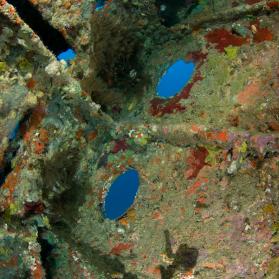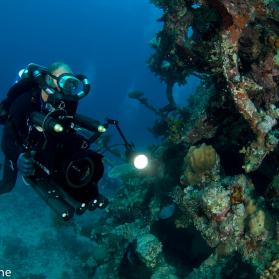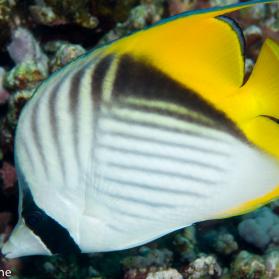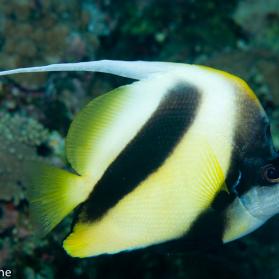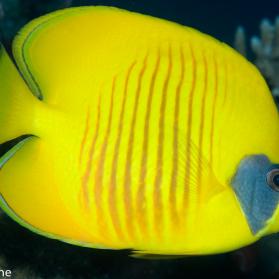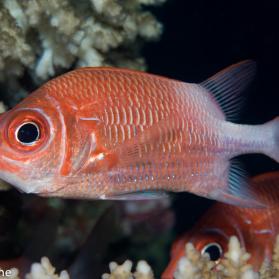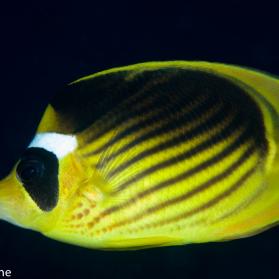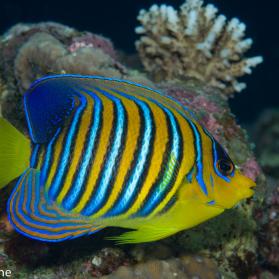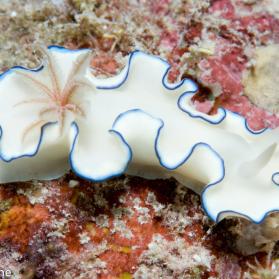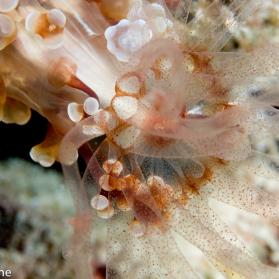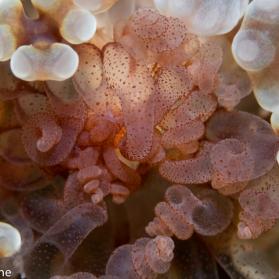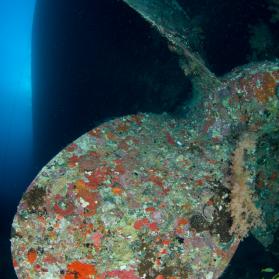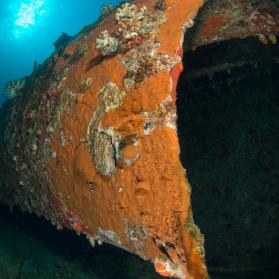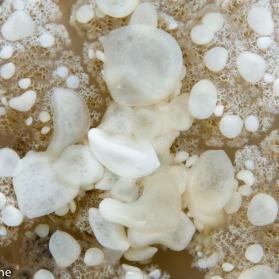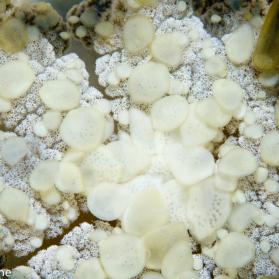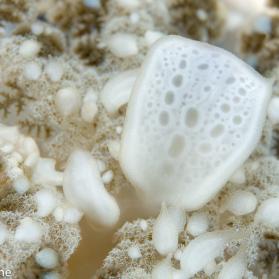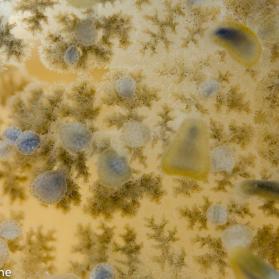We find black corals at several places. Sometimes the black coral are relatively small branches; but especially on Muddhar we see really enormous trees of black coral on the south side of the reef. With a length of at least three, four meters these are the biggest chunks of black coral we have seen ever.
Except these branches and trees of black coral we encounter something else on these dive sites. On a number branches of black coral we notice a brigthly coloured mass. At closer research it proves be a type sponge. From a distance it looks like a slimy mass hanging down from the branches. We ask our dive guide about these sponges and it appears that these dripping sponges so far are only be found in Saudi Arabia. It is an endemic species; only seen on the reefs of Farasan Banks. The coulours these dripping sponges is fenominal. Bright red pieces are varied with almost fluorecent yellow and white pieces of sponge. From near by you can see the structure of the sponge very good.
Also divers loving small stuff have enough to see in Saudi Arabia. Beautiful nudibranchs as the white and black coloured Halgerda willeyi and the bright coloured Nembrotha magalocera decorate the reef. But also small shrimps try to hide themselves in remote areas. On the many sea whips shrimps and small gobies are found. On sandy pieces of the reef you will be surprise of the small live is to be found here; small cuttle fish or symbiosic gobies with its little shrimp; you must search well but they are certainly there.
In between dives there is daily the possibility to visit one of the very small islands. On these small islands you will meet no inhabitants; they are to small for that. A lot of birds and salamanders have made of these small islands their home or breeding grounds. If you are unlucky not to have seen turtles during your diving you will certainly find proof on these islands that they occur in this area. Skeletons of dead turtles on the islands.


